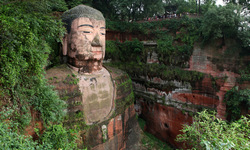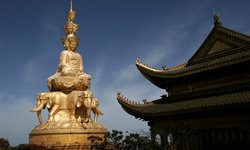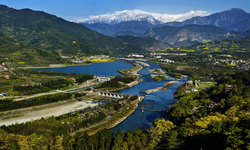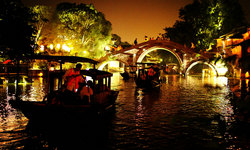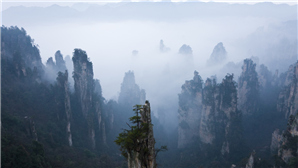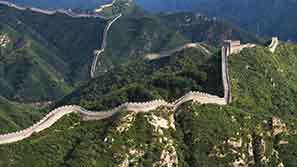Huanglong Scenic and Historic Interest Area 📺️
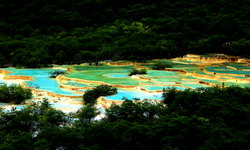
Huanglong (simplified Chinese: 黄龙; traditional Chinese: 黃龍; pinyin: Huánglóng; literally: 'yellow dragon') is a scenic and historic interest area in the northwest part of Sichuan, China. It is located in the southern part of the Minshan mountain range, 370 kilometres (230 mi) north-northwest of the capital Chengdu.
This area is known for its colorful pools formed by calcite deposits, especially in Huanglonggou (Yellow Dragon Gully), as well as diverse forest ecosystems, snow-capped peaks, waterfalls and hot springs. Huanglong is also home to many endangered species including the giant panda and the Sichuan golden snub-nosed monkey. Huanglong was declared a World Heritage Site by UNESCO in 1992.
Due to thousands of years of geological evolution, Huanglong consists of numerous unique landscapes of geological landforms. Glacial revolution, terrane structure, stratum of carbonic acid rock, tufa water and climatic conditions such as Arctic-alpine sun light have created this world-famous travertine landscape. These accumulated travertine landscapes and pools are Huanglong's main attraction.
Huanglong covers an area of 700 km2 at an altitude between 1700m and 5588m. Major scenic areas include:
Huanglong Valley (黄龙沟)
Danyun Gorge (Chinese: 丹云峽; literally: 'red cloud gorge')
Muni Valley (牟尼沟)
Xuebaoding (雪宝顶; 'snow treasure peak') – 5,588 m (18,333 ft)
Xueshan Ridge (雪山梁; 'snow mountain ridge') – 4,007 m (13,146 ft), the highest point on the road from Jiuhuang Airport to Huanglong Valley.
Red Star Rock (红星岩)
Sigou (四沟; 'fourth gully')
